
New Terminal, Photo Credit: Allegheny County Airport Authority
Pittsburgh Infrastructure and Market Access
Let’s run down the checklist of Pittsburgh’s infrastructure and market access compared to other metros:
Domestic & international direct flights? Check.
Inland port? Check.
Interstate highway system? Check.
Close to major metros, international markets, and natural resources? Check, check and check.
The Pittsburgh region’s combination of assets and strategic location sets it apart from other metros.
The Pittsburgh region is still a leading steel and metals manufacturer, but it is much more than that. Pittsburgh has an economy that includes innovative technology and life sciences companies, top-ranked educational institutions, such as Carnegie Mellon University and the University of Pittsburgh, robust retail and hospitality and so much more. Accessing these assets makes regional infrastructure – physical and digital – critical.
A more than $1 trillion bipartisan federal infrastructure bill was signed by President Joe Biden in November 2021. Later, Republicans and Democrats in the House and the Senate approved the bill to become the new infrastructure law — unlocking unprecedented allocations towards infrastructure projects. For the Pittsburgh region and its local government, these new laws from the federal government will mean new opportunities for improvements to broadband, utilities and transportation, especially for those in poor condition. These improvements will make the region more attractive for trending business investment and talent.
Considering just transportation, our infrastructure system – for getting here or getting goods from the region to market – is already about easy access, reliability and convenience. Let’s take a look.
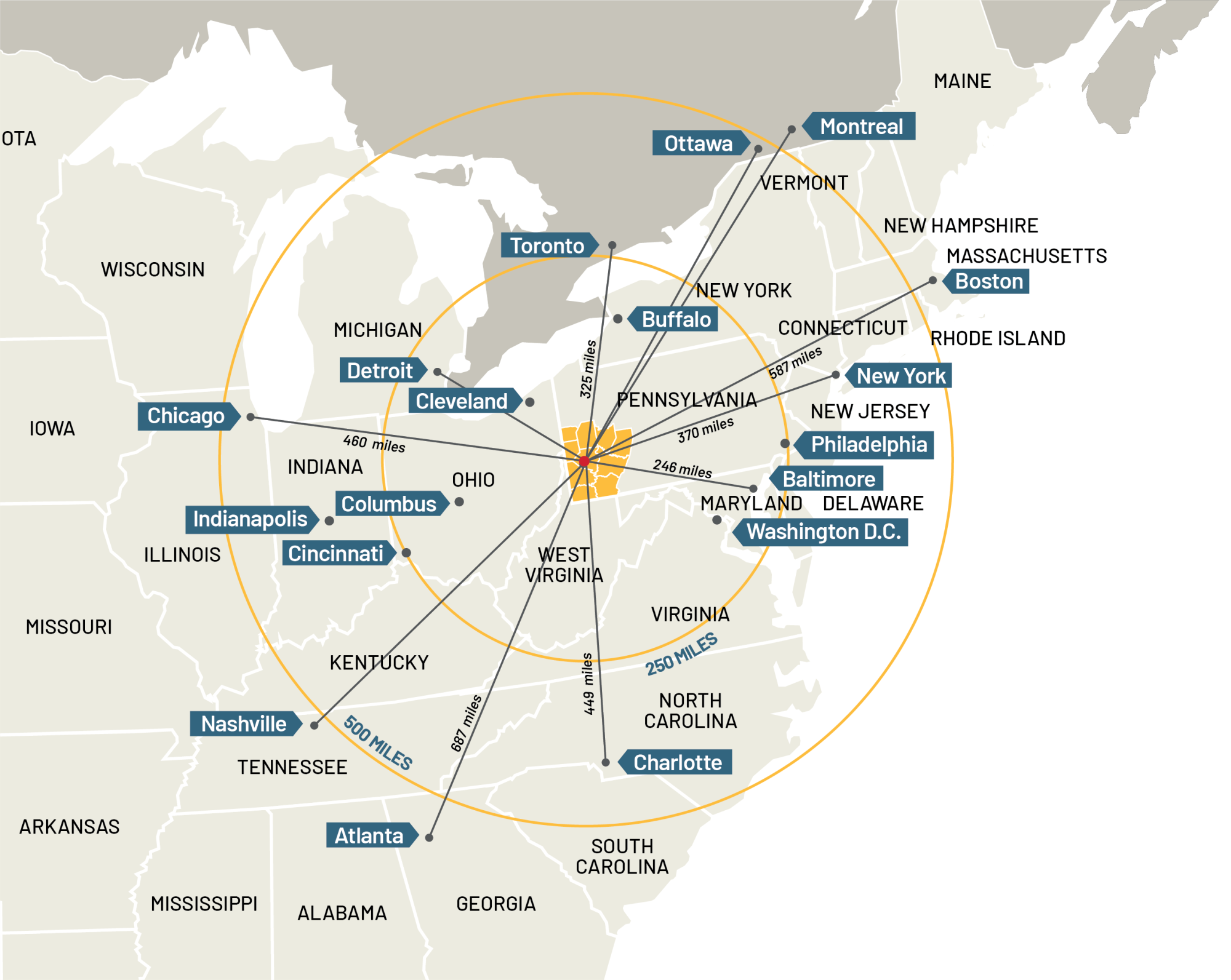
Closer Than You Think
The Pittsburgh region is in the middle of East Coast America. It’s close to the action but uniquely situated to differentiate positively from the rest of the world. Being here optimizes operations, allowing you to dedicate more time to make an impact.
Federal funding has made the city of Pittsburgh, Allegheny County and southwestern Pennsylvania accessible to other major cities via broadband networks and all forms of transportation.
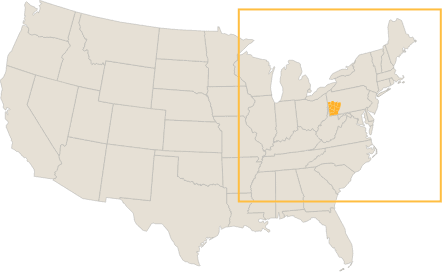
Pittsburgh’s Direct Flights
Pittsburgh International Airport (PIT) connects travelers to destinations around the United States and the world. PIT offers 60 non-stop destinations and16 airlines including American Airlines, Delta Airlines, Southwest Airlines and United Airlines.
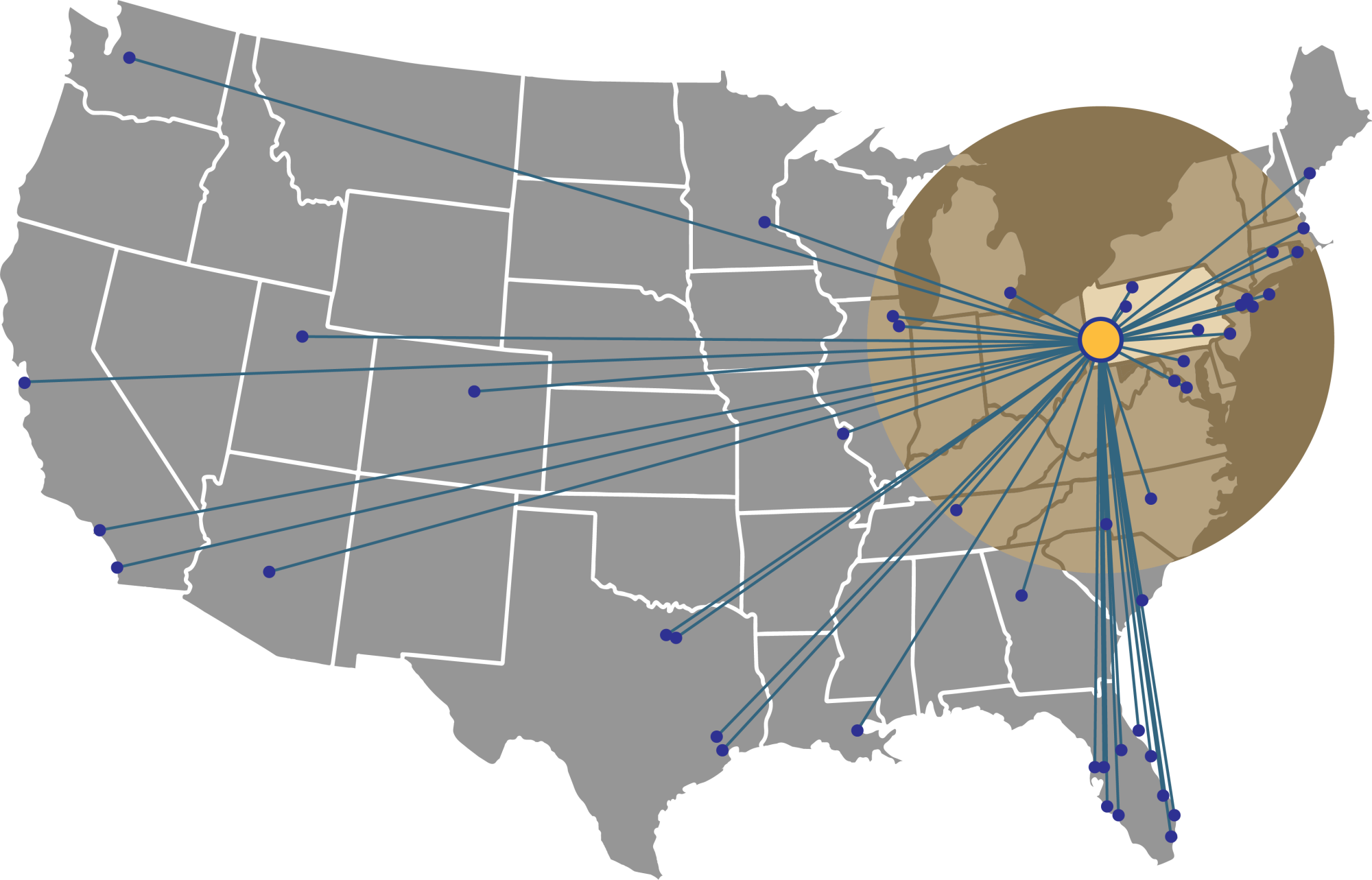
1 hr 30 min flight time or less
| Destination | Flight Time |
|---|---|
| Morgantown | 40 min |
| DuBois, PA | 50 min |
| Bradford, PA | 55 min |
| Baltimore | 1 hr |
| Toronto | 1 hr |
| Washington D.C. | 1 hr |
| Philadelphia | 1 hr 10 min |
| Lancaster | 1 hr 25 min |
| Destination | Flight Time |
|---|---|
| Boston | 1 hr 30 min |
| Charleston | 1 hr 30 min |
| Charlotte | 1 hr 30 min |
| Chicago | 1 hr 30 min |
| Montreal | 1 hr 30 min |
| Nashville | 1 hr 30 min |
| New York | 1 hr 30 min |
| Raleigh-Durham | 1 hr 30 min |
Additional non-stop flights
| Destination | Flight Time |
|---|---|
| Hartford | 1 hr 35 min |
| Atlanta | 1 hr 40 min |
| Portland, ME | 1 hr 40 min |
| Providence | 1 hr 40 min |
| St. Louis | 1 hr 40 min |
| Orlando | 2 hrs 10 min |
| Detroit | 2 hrs 15 min |
| Minneapolis | 2 hrs 15 min |
| Newark | 2 hrs 15 min |
| Punta Gorda | 2 hrs 20 min |
| Sarasota | 2 hrs 20 min |
| St. Petersburg | 2 hrs 20 min |
| Palm Beach | 2 hrs 25 min |
| Tampa | 2 hrs 25 min |
| Fort Lauderdale | 2 hrs 30 min |
| Destination | Flight Time |
|---|---|
| Fort Myers | 2 hrs 30 min |
| Miami | 2 hrs 35 min |
| Key West | 2 hrs 40 min |
| New Orleans | 2 hrs 40 min |
| Dallas | 3 hrs |
| Houston | 3 hrs |
| Denver | 3 hrs 30 min |
| Cancun | 3 hrs 35 min |
| Las Vegas | 4 hrs 30 min |
| Phoenix | 4 hrs 30 min |
| Los Angeles | 5 hrs 15 min |
| San Francisco | 5 hrs 30 min |
| Seattle | 5 hrs 30 min |
| London | 7 hrs 20 min |
A Safe Place To Do Business
The Pittsburgh area is one of the few areas around the country that enjoys near freedom from natural disasters so supply chains can keep running.
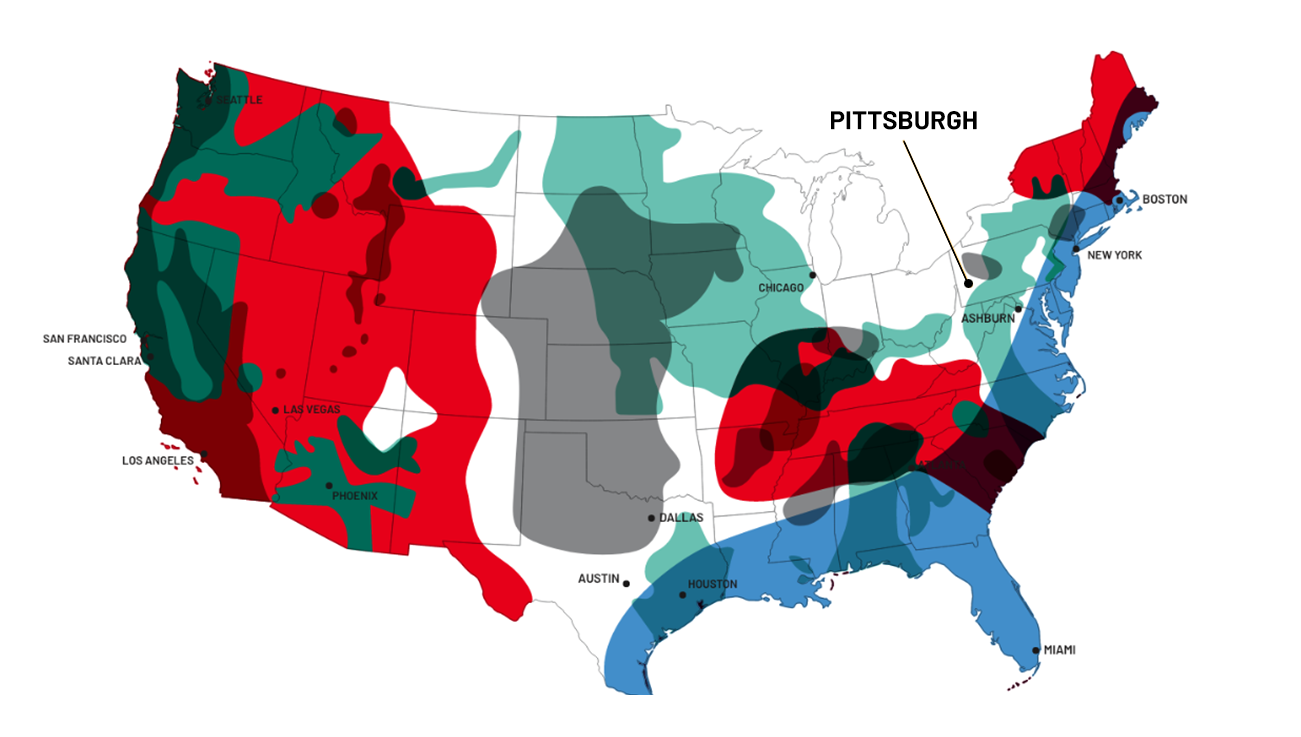





Map-based on data from redcross.org and noaa.org
Pittsburgh Transportation
Airport Access

- Pittsburgh International (PIT) serves 60 destinations with non-stop flights
- Nonstop international service to London (and beyond) on British Airways
- Four runways with available capacity; extensive air cargo facilities with direct runway access
- Named J.D. Power #2 Medium Size Airport in North America (2022)
- 24 general aviation airports throughout the region
Rail

- Over 1,300 miles of freight railway
- Three Class 1 railroads: CSX, Norfolk Southern, and Bessemer & Lake Erie (owned by Canadian National)
- One intermodal terminal: Norfolk Southern
Rivers
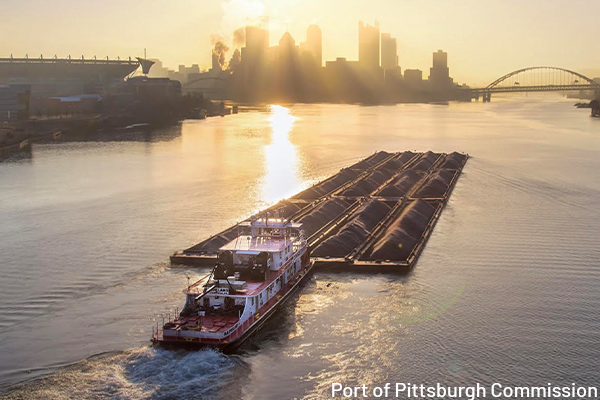
- Second-largest and fourth-busiest inland port in the U.S.
- 22 river terminals throughout the region
Highways
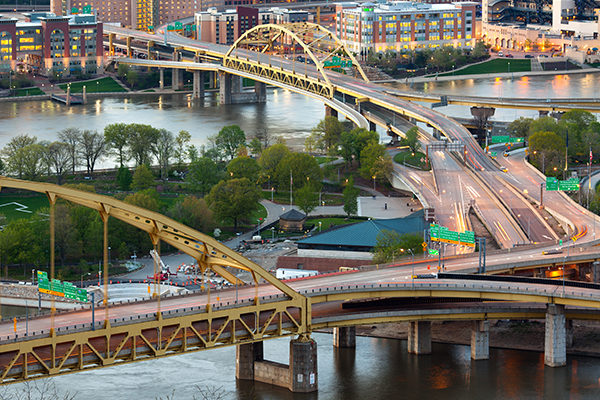
- Four major interstate highways include I-70, I-76 (PA Turnpike), I-79 and I-80
- I-68 just south of outside the region
- City and regional authorities, like Pittsburgh Regional Transit, provide a robust network of transit options, including light rail and bus.
- PennDOT oversees programs and policies affecting highways, urban and rural public transit, airports, railroads, ports and waterways.
Pittsburgh’s infrastructure will support you to build here.